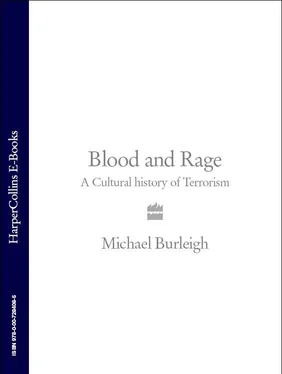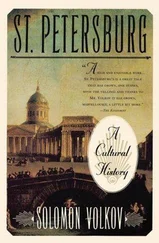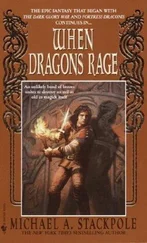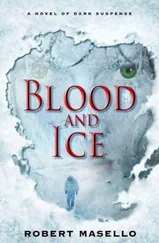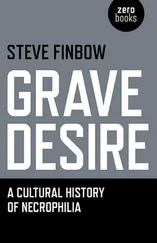While the Fenian convicts were spared the full disciplinary rigours of Victorian jails, those who acted up were kept in solitary confinement or in irons for periods of time that seemed cruel. Tales of the plight of the prisoners swelled the ranks of Fenian activists and sympathisers, for they were the objects of emotive campaigns on their behalf, campaigns which routinely highlighted the sufferings of the prisoners’ innocent wives and children. Everywhere as the cold-blooded facts of terrorist outrages responsible for their conviction faded from memory, the plight of the imprisoned occupied the emotional foreground. Gladstone’s administration eventually opted for the sensible tactic of releasing the small fry, then expatriating the ringleaders, while keeping Fenians who had been members of the armed forces in detention, that being the issue on which queen Victoria refused to be persuaded towards leniency. 8
Rage at the ‘injustices’ and ‘indignities’ heaped upon imprisoned Fenians also led to thoughts of retaliation and revenge among their supporters. The enraged included Jeremiah O’Donovan Rossa, who in 1871 had been amnestied by the Gladstone government from a fifteen-year jail sentence on condition he remove himself to America. A dipsomaniac over-fond of whiskey and cigars, Rossa was given to sanguinary bombast, threatening to reduce London to ashes with the aid of a dozen arsonists, who would bring ‘the fires of Hell’ to the imperial capital. The erratic Rossa, known to detractors as O’Dynamite, was only fitfully connected to Clan na Gael, a US-based secret society founded in June 1867 under John Devoy to oppose Irishmen lured into supporting Home Rule.
In 1876 this secret society mounted the daring escape from the Imperial prison at Fremantle in Western Australia of six imprisoned Fenians, who were spirited out to international waters on a US-registered whaler called the Catalpa. Its flag can still be seen in the national museum in Dublin. This propaganda coup fuelled the notion of a skirmishing fund to finance attacks against Britain and its global interests, the first project being an invasion of Canada, which it was hoped the US would take advantage of. This resulted in a few inconsequential border skirmishes. A great deal of Clan money was mercifully squandered on a schoolmaster and inventor called John Holland, the genius who offered to build a Fenian submarine. Ever more elaborate models led to actual boats initially propelled by steam lines from a surface ship, and then, after the successful installation of engines, unaccompanied. Mishaps included a Fenian flying through the air when, having forgotten to tighten a hatch, an air bubble propelled him skywards. Holland’s habit of suing all and sundry eventually led the Clan to steal his boat, which then was left to rust – like a riveted porpoise -while others spirited away its engines. But an idea had been born. In 1900 the same inventor’s USS Holland would become the first submarine purchased by the US Navy.
John Devoy, the Clan’s most intelligent leader, decided on what he called a New Departure in 1878 which supported Charles Parnell’s constitutional form of Irish nationalism, but others in the leadership simultaneously embarked on a campaign of terror, as did O’Donovan Rossa, with whom, to complicate matters, the Clan occasionally cooperated. Much of the rhetoric familiar from more contemporary terrorist movements was evident in embryonic form among these Fenians in the 1880s, although their avoidance of the term terrorism means that more emphasis has been placed on Russian nihilists as the progenitors of the tactic. In fact, what the Russians did, rather than what they said, was more akin to the targeted assassination of key imperial figures, with a view to isolating the government from society, than an attempt to create mass panic so as to influence the political process. 9
The early Fenian notion of a people’s army representing the oppressed nation’s will through insurrectionary violence was gradually displaced by that of terror campaigns designed to sap the morale of the more mighty imperial enemy. This change of tactics was because there was no substantial support for the insurrection, a truth that was cleverly concealed within the Fenians’ own analysis: ‘We should oppose a general insurrection in Ireland as untimely and ill-advised. But we believe in action nonetheless. The Irish cause requires Skirmishers. It requires a little band of heroes who will initiate and keep up without intermission guerrilla warfare – men who will fly over land and sea like invisible beings – now striking the enemy in Ireland, now in India, now in England itself as occasion may present.’ The conceit of the enlightened vanguard would become familiar to all manner of modern terrorists.
The preferred weapon was influenced by the Russian nihilist attacks that had culminated in the assassination of tsar Alexander II on 1 March 1881 by terrorists hurling small grenade-like explosives at their target. Nitroglycerine had been invented by Ascanio Sobrero, a Piedmontese chemist, who by mixing glycerine with sulphuric and nitric acids made a yellowish, sweet-smelling liquid with curious properties. A small quantity blew up in his face. Pursuing a different tack, Sobrero tried a trace on a dog, which died in agony, but which was revealed to have hugely distended blood vessels in its heart and brain. British doctors subsequently discovered that nitroglycerine brought relief for the paralysing pain of angina pectoris. In the 1860s the Swedish inventor Alfred Nobel discovered how to stabilise nitroglycerine by absorbing it into a solid, using such things as kieselguhr, sawdust or gelatine, the end product being sticks of dynamite with names like Atlas. Nobel also invented gunpowder-based detonators to trigger the dynamite explosion. 10
The Fenian terrorist Rossa endeavoured to bask in the remote glow of the Russian nihilist assassins by advertising in his newspaper courses in manufacturing bombs by a Professor Mezzeroff, ‘England’s invisible enemy’. Mezzeroff was a tall, sharp-faced man with curly hair arranged around his pate and a ‘grizzly moustache’. Habitual wearing of black clothes and steely spectacles rounded off the sinister effect of a character straight out of Dostoevsky or Conrad. His origins were mysterious, although he had the accents of an Irishman. His father was Russian, but his mother was said to have been a Highlander and he enjoyed US citizenship. Students were encouraged to pay US$30 for a thirty-day course in making dynamite, although Mezzeroff’s enthusiasm was greater than his knowledge of chemistry. He claimed that dynamite ‘was the best way for oppressed peoples from all countries to get free from tyranny and oppression’. A pound of the stuff contained more force than ‘a million speeches’. 11
Instead of initiating a burning event, with pressures up to 6,000 atmospheres in milliseconds, dynamite causes a shock wave with pressures of up to 275,000 atmospheres. In other words, compared with gunpowder, a dynamite explosion is like the difference between being knocked off a bicycle by a car and being hit by an express train. Moreover, unlike cumbersome barrels of gunpowder, lightweight dynamite could be concealed within small containers or included in brass grenades whose fragments would cause death and injury when thrown. Different detonators became available to bombers, beyond the gunpowder-based fuses that had to be lit. They included systems based on acids burning through wads of paper pushed into holes in a series of pipes; percussive mechanisms involving timers and a revolver; or alarm-clock-based ‘infernal machines’ that ticked away to oblivion. These enabled terrorists to minimise personal risk by practising place and leave, although there was considerable risk to anyone who happened along. A weapon of such lethality would inevitably entail collateral civilian casualties, even when it was used to decapitate a state’s leadership or against fixed strategic assets such as arsenals or dockyards. Hence the anticipatory formulation of ethical evasions before the Fenian campaign had even started. Dynamite terrorism was the tactic of the weak in an otherwise impossible conflict. There were no immutable laws of war because evolving technologies tended to make them redundant. In any case, as Ireland was not a sovereign state, Irishmen were absolved of international inter-state conventions. In obeisance to the spirit of the Victorian era, the ultimate rationalisation was that dynamite was the apogee of scientific warfare. Hence the respect accorded to Mezzeroff, later immortalised as the ‘Professor’ by Joseph Conrad in The Secret Agent.
Читать дальше
